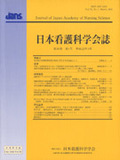Japanese
English
- 販売していません
- Abstract 文献概要
- 参考文献 Reference
- サイト内被引用 Cited by
要旨
目的:慢性呼吸器疾患患者における呼吸困難のマネジメント方略の実行状況とその特徴,ADLとの関連について検討することを目的とした.
方法:医療機関に外来通院中の慢性呼吸器疾患患者64名を対象に,個人特性,呼吸困難のマネジメント方略,ADLに関する横断調査を実施した.
結果:最も多くの対象者が行っていた呼吸困難のマネジメント方略は,「自分のペースで動く」,次いで「動作をゆっくり行う」であった.呼吸困難のマネジメント方略の実行内容に基づく分類では,マイペース型,動作調整型,呼吸調整型,呼吸・動作調整型の4類型を認めた.最も多くのマネジメント方略を行い,呼吸困難が強い特徴をもつ呼吸・動作調整型の対象者は,他の類型の対象者に比べ,疾患特異的なADLは低値であったが,下肢筋力に有意差は認めず,自立した生活を行っていた.また,呼吸困難が軽度の群においては,動作をゆっくり行う群はそれを行わない群に比べ,ADLが有意に低かった.
結論:呼吸困難が強い対象者では,呼吸困難のマネジメント方略を駆使することでADLを維持できる可能性があるが,一方,呼吸困難が軽度で呼吸機能が著しく低下していない段階で,動作を抑制するようなマネジメント方略の使用は,ADLを自らで制限していくことにもなると考えられた.
Abstract
Purpose:The purpose of this study was to investigate dyspnea management strategies and activities of daily living (ADL) in patients with chronic lung diseases.
Method:This study was a cross-sectional design. Sixty-four subjects with chronic lung disease were included. These subjects had more than Grade 2 of dyspnea on the Medical Research Council Dyspnea Scale (MRC). Subjects' characteristics, dyspnea management strategies, and ADL in patients with chronic lung diseases were investigated.
Results:Most subjects constantly used “moving at own pace”and “slow movements”as dyspnea management strategies.A cluster analysis for dyspnea management strategies identified four clusters:Cluster Ⅰ (“moving at own pace”type), Ⅱ (“adjusting movements”type), Ⅲ (“adjusting breathing”type), and Ⅳ (“adjusting movements and breathing”type). Cluster Ⅳ subjects had a higher grade of dyspnea and lower ADL scores compared with subjects of the other three clusters.However Cluster Ⅳ subjects could perform their ADL almost independently and there was no significant difference in quadriceps force among the four clusters. Of MRC Grade 2 subjects (n=20), eleven subjects used “slow movements”(slow-moving subjects). The slow-moving subjects showed significantly lower ADL scores compared with the non slowmoving subjects.
Conclusion:If patients had a higher grade of dyspnea, various dyspnea management strategies such as “adjusting movements and breathing”would be useful for maintaining their ADL. However,patients' ADL may decrease if they limit themselves to dyspnea management strategies which are like “slow movements.”
Copyright © 2010, Japan Academy of Nursing Science. All rights reserved.


